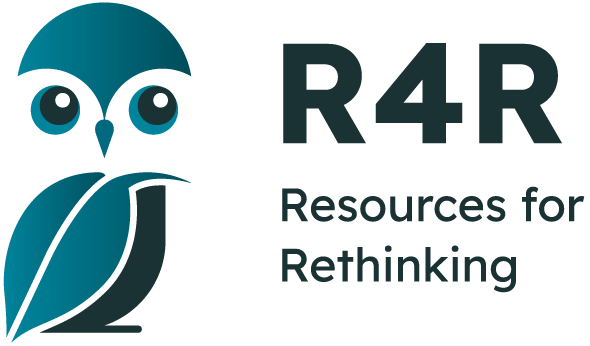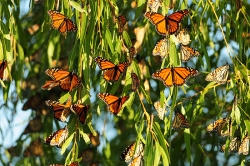- Home
- Tutorial
- Resource Guides
- Focus Areas
- LSF Programs
-
Professional
Development - Review Process
-
A project of LSF

Search for Resources
Description
This resource engages students in a study of wildlife migration by tracking the fall flight of monarch butterflies to Mexico. Using an on-line tool, Canadian students track monarch butterfly sightings in early fall, along with students from the United States and Mexico.
Before beginning the tracking activity, students learn how to identify a monarch butterfly, relate changing seasonal habitat to the timing of migration, and are trained to calculate migration rates and submit sighting reports. 'Migration Journals" are used to chronicle each step in the process.
The package includes parent letters, maps, slide shows, planning guides, journal pages, many reproducibles, related links, suggested activities, and word glossaries.
A brief description of each lesson follows.
Lesson One: The Magic of Monarch Butterfly Migration (3X60min)
After reading "The Migration of Monarch Butterfly", students locate their home province and the monarch's winter home on a map of North America. Research questions are then explored and keywords defined in "Migration Journals".
Lesson Two: Do You Know A Monarch When You See One? (3X60min)
After reading "Do You Know A Monarch When You See One?", students do a scientific illustration of a monarch butterfly, compare and contrast a monarch and viceroy butterfly using a Venn diagram, and discover words and concepts related to butterfly parts and identification. Students share and discuss their work.
Lesson Three: When, Where and How To Watch Fall Migration (5X60min)
After viewing a Power Point presentation, students describe three ways to monitor fall migration, read and analyze real monarch observations, calculate migration rates, list essential items in a sighting report, and submit a practice sighting report to the Journey North website.
Lesson Four: Fall Habitat Observations (7X60min)
After discussing how a monarch's habitat provides the basic needs for survival, students collect and analyze data on how seasonal changes relate to the timing of fall migration. They use this data to predict the timing of fall migration in their community. Findings are summarized and presented in booklets, scrapbooks, or discovery posters.
Lesson Five: Follow The Migration
Students use the on-line tool to report regularly on monarch butterfly sightings in their areas. They continue to record interesting data and information in their journals as well.
General Assessment
What skills does this resource explicitly teach?
- Collecting and analyzing data
- Using data to make predictions
- Presenting information in different ways
- Calculating migration rates
- Interpreting patterns and trends in data
- Using tools and apparatus to carry out investigations
- Working cooperatively with team members to develop and carry out a plan
- Identifying and using a variety of sources and technologies to gather information
- Using an on-line tool to record data
Strengths
- Very interesting and provides a unique learning opportunity for students
- Easy to use and all handouts/reproducibles are very student friendly
- It is up to date
- Has an out-of-doors experience
- Fun interactive activities are included
- Related lessons and links are outstanding
- All lessons have a Power Point option to use for those who would have trouble reading articles
- Planning guides are excellent
- On-line tracking tool is easy to use
- Lessons are written so that most students can be successful, although no adaptations are provided for modifying work
- Touches on a number of subject areas
- Students have an opportunity to contribute to and be part of an international initiative
Weaknesses
- Resource needs to be initiated in the fall
- The monarch butterfly does not migrate to all parts of Canada
- Assessment tools must be developed by the teacher
- There are no suggestions for modifying work for struggling students
- There are few opportunities for students to to clarify and express values
Relevant Curriculum Units
The following tool will allow you to explore the relevant curriculum matches for this resource. To start, select a province listed below.
- Step 1Select a province
- Alberta
- Manitoba
- Newfoundland & Labrador
- Northwest Territories
- Nova Scotia
- Step 2Select a grade level
- Grade 6
- Step 3Select a subject
- Nunavut
- Ontario
- Step 2Select a grade level
- Grade 6
- Step 3Select a subject
- Science & Technology
- Step 4Relevant matches
- Life Systems: Biodiversity
- Grade 7
- Step 3Select a subject
- Science & Technology
- Step 4Relevant matches
- Life Systems: Interactions in the Environment
- Prince Edward Island
- Quebec
- Step 2Select a grade level
- Grade 5
- Step 3Select a subject
- Science & Technology
- Step 4Relevant matches
- Living Things
- Grade 6
- Step 3Select a subject
- Science & Technology
- Step 4Relevant matches
- Living Things
- Saskatchewan
Themes Addressed
Citizenship (1)
- Community-Building and Participation
Ecosystems (2)
- Appreciating the Natural World
- Habitat Loss
Sustainability Education Principles
| Principle | Rating | Explanation |
|---|---|---|
| Consideration of Alternative Perspectives | Satisfactory | A positive bias about the importance of students gaining an appreciation and responsibility for the natural world is presented. |
Consideration of Alternative Perspectives:
| ||
| Multiple Dimensions of Problems & Solutions | Satisfactory | The resource emphasizes the need for society to take notice of important biological phenomenon and appreciate the natural world. |
| Multiple Dimensions of Problems & Solutions: Effectively addresses the environmental, economic and social dimensions of the issue(s) being explored.
| ||
| Respects Complexity | Satisfactory | The resource provides thought-provoking activities that encourage both discussion of the students role as "citizen scientists" and as stewards of our natural world. |
| Respects Complexity: The complexity of the problems/issues being discussed is respected. | ||
| Acting on Learning | Good | |
| Acting on Learning: Learning moves from understanding issues to working towards positive change — in personal lifestyle, in school, in the community, or for the planet
| ||
| Values Education | Poor/Not considered | Poor- Students have limited opportunities to identify and express their values. |
| Values Education: Students are explicitly provided with opportunities to identify, clarify and express their own beliefs/values. | ||
| Empathy & Respect for Humans | Satisfactory | |
| Empathy & Respect for Humans: Empathy and respect are fostered for diverse groups of humans (including different genders, ethnic groups, sexual preferences, etc.). | ||
| Personal Affinity with Earth | Very Good | There is an excellent out-of -doors experience. |
| Personal Affinity with Earth: Encourages a personal affinity with -the natural world.
| ||
| Locally-Focused Learning | Good | The tracking of monarch butterflies in their own community gives this resource a local focus. |
| Locally-Focused Learning: Includes learning experiences that take advantage of issues/elements within the local community.
| ||
| Past, Present & Future | Satisfactory | There is no discussion of the past. The activity focuses on real-time results and monitoring. It encourages students to continue the tracking of monarch butterflies and other species in the future. |
| Past, Present & Future: Promotes an understanding of the past, a sense of the present, and a positive vision for the future. | ||
Pedagogical Approaches
| Principle | Rating | Explanation |
|---|---|---|
| Open-Ended Instruction | Satisfactory | A combination of structured and guided inquiry is used. |
| Open-Ended Instruction
: Lessons are structured so that multiple/complex answers are possible; students are not steered toward one 'right' answer. | ||
| Integrated Learning | Good | Although primarily a science resource, opportunities are also provided to explore concepts in geography, math, art, and language arts. |
| Integrated Learning: Learning brings together content and skills from more than one subject area
| ||
| Inquiry Learning | Good | |
| Inquiry Learning: Learning is directed by questions, problems, or challenges that students work to address.
| ||
| Differentiated Instruction | Satisfactory | Both cognitive and affective domains are addressed. There are no accommodations suggested for struggling learners, although appropriate groupings would address some of these challenges. |
| Differentiated Instruction: Activities address a range of student learning styles, abilities and readiness.
| ||
| Experiential Learning | Very Good | |
| Experiential Learning: Authentic learning experiences are provided
| ||
| Cooperative Learning | Satisfactory | |
| Cooperative Learning: Group and cooperative learning strategies are a priority.
| ||
| Assessment & Evaluation | Poor/Not considered | Poor- although reflection questions and answers are provided the lesson guides have no assessment tools for capturing formative or summative information about learning and performance. |
| Assessment & Evaluation: Tools are provided that help students and teachers to capture formative and summative information about students' learning and performance. These tools may include reflection questions, checklists, rubrics, etc. | ||
| Peer Teaching | Satisfactory | |
| Peer Teaching: Provides opportunities for students to actively present their knowledge and skills to peers and/or act as teachers and mentors.
| ||
| Case Studies | Satisfactory | Although no relevant case studies are given in the lesson, links provide a wealth of information. |
| Case Studies: Relevant case studies are included. Case studies are thorough descriptions of real events from real situations that students use to explore concepts in an authentic context. | ||
| Locus of Control | Satisfactory | Although the resource is specific with regards to program content and the medium in which students work, there are opportunities in extension activities to go deeper into chosen issues. |
| Locus of Control: Meaningful opportunities are provided for students to choose elements of program content, the medium in which they wish to work, and/or to go deeper into a chosen issue. | ||

